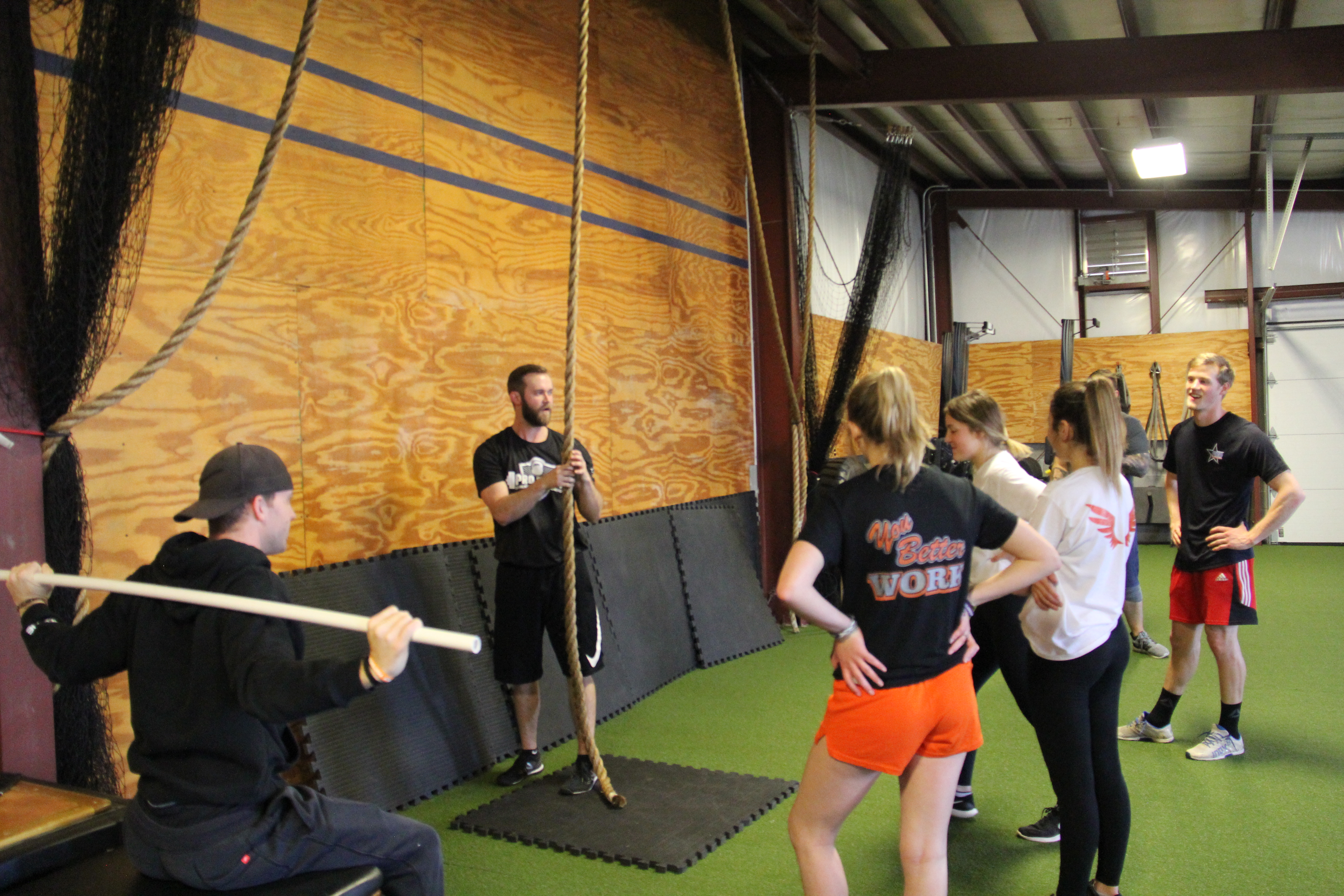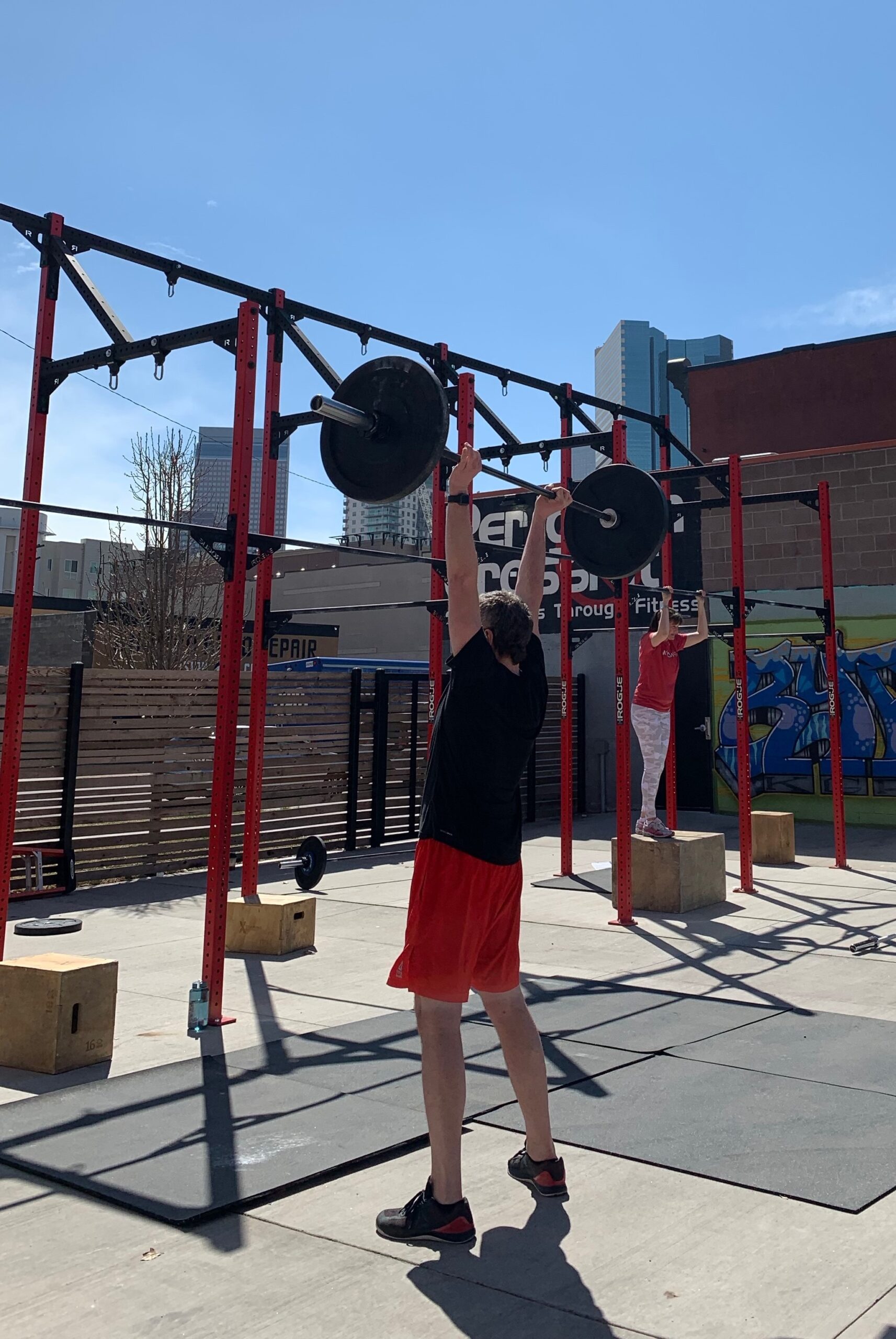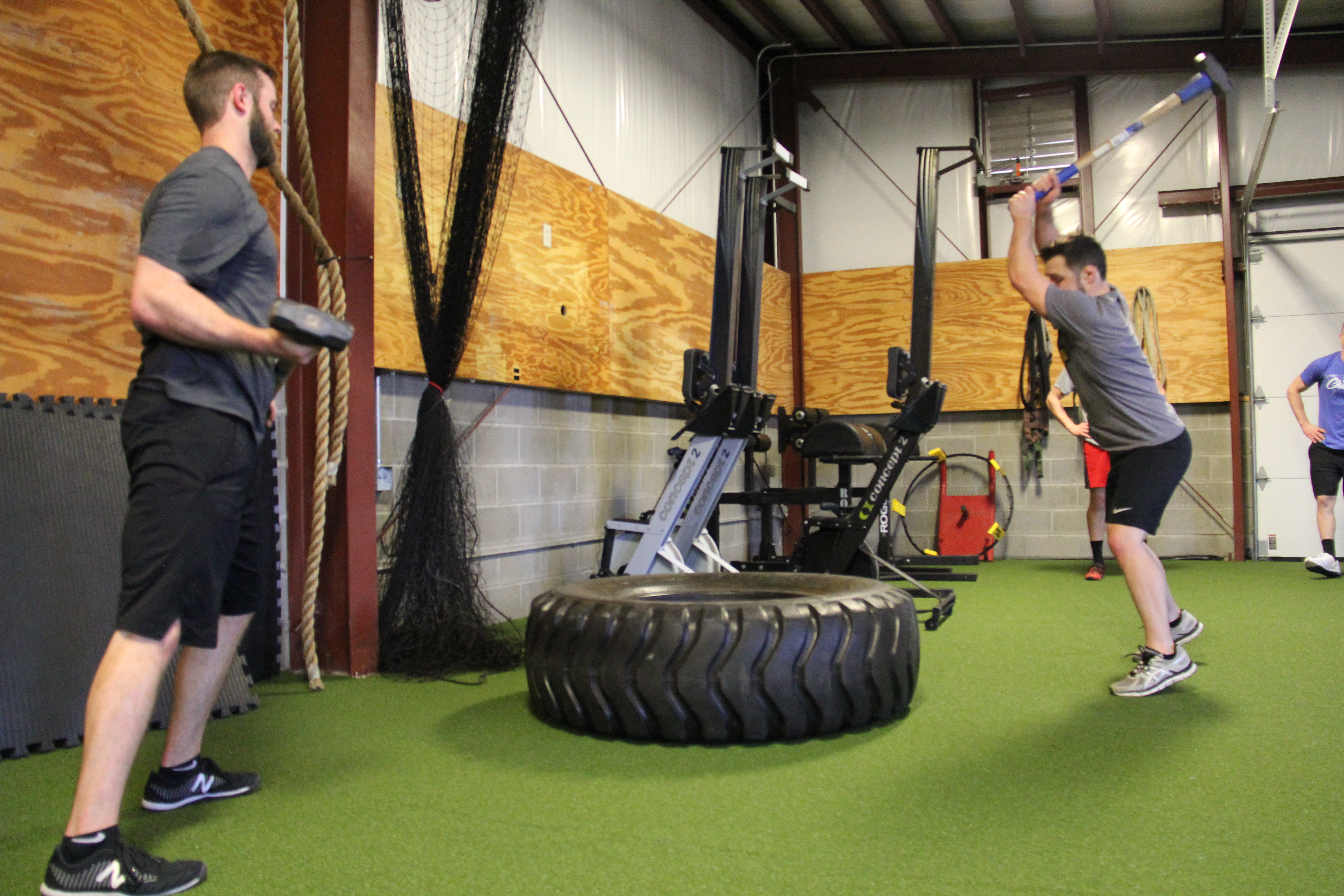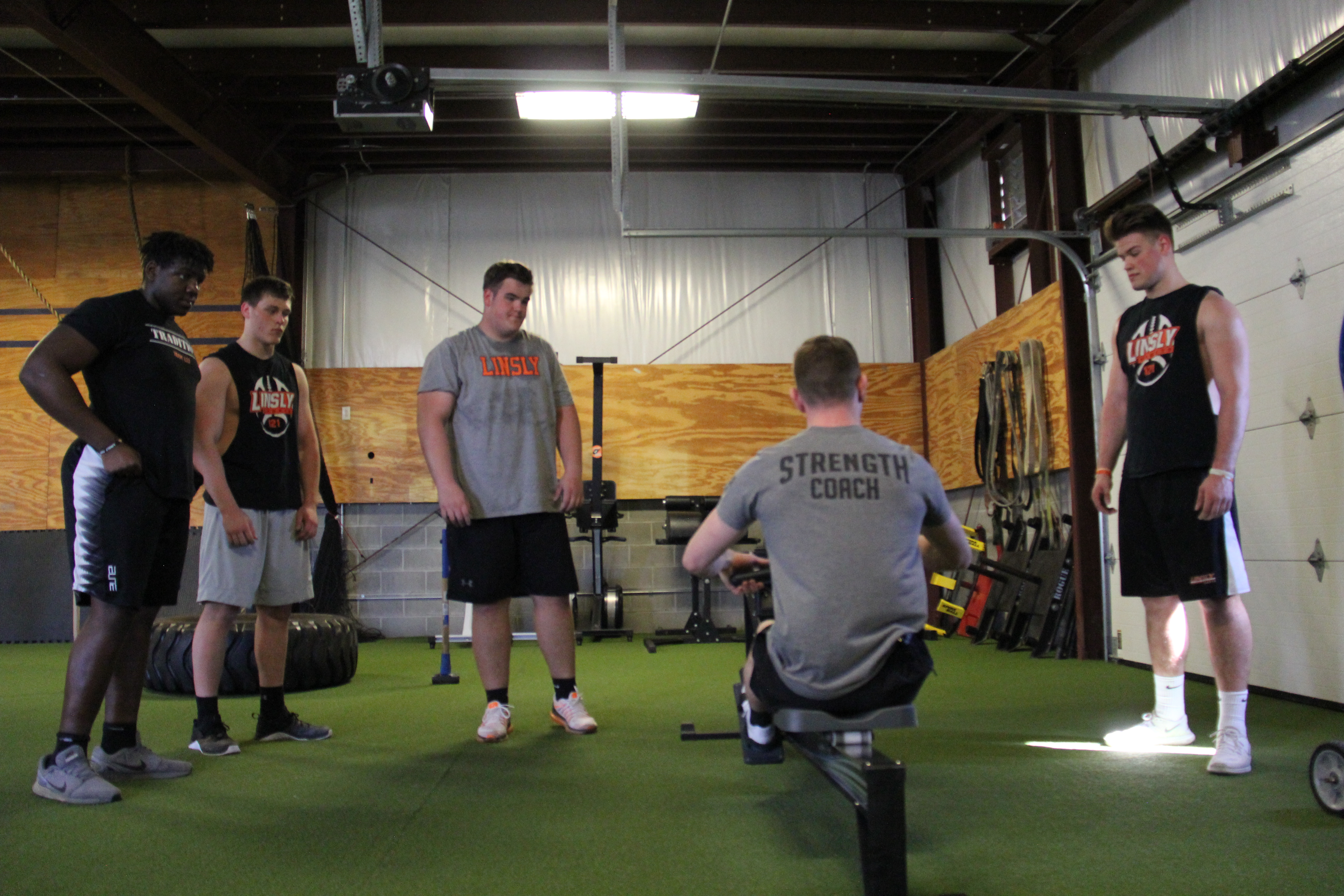Coach Whitney Rodden Talks Olympic Lifting for Junior Athletes
Sports Performance | Strength & ConditioningABOUT THE AUTHOR

Phil White
Phil White is the co-author of Waterman 2.0 (with Dr. Kelly Starrett), The 17 Hour Fast (with Dr. Frank Merritt), Unplugged (with Dr. Andy Galpin and Brian Mackenzie) and Game Changer (with Fergus Connolly). He writes for Train Heroic, HANAH, Momentous, XPT, Onnit, StrongFirst, TRX, McGregor FAST, and other leaders in human performance. In a previous life, Phil was nominated for a screenwriting Emmy. He lives with his wife and two sons in the mountains of Colorado. Connect with Phil at www.philwhitebooks.com
In a previous post in this series, former LA Lakers strength and conditioning coach and founder of TD Athletes Edge Tim DiFrancesco riffed about the ins and outs of resistance training for young athletes. To complement Tim’s piece, we decided to shift our attention to Olympic lifting. Due to the demanding nature of the discipline, it needs to be introduced thoughtfully, but when done right, can help young athletes withstand the rigors of competitive sports and make them faster, stronger, and more explosive. To get the lowdown, we hit up Whitney Rodden, head strength and conditioning coach at MidAmerica Nazarene University in Olathe, Kansas. Though it’s a small school whose teams play in the NAIA, MNU punches far above its weight on the platform, regularly sending lifters to compete against their NCAA Division I peers at college nationals. Here’s Whitney’s take on progression, programming, and how to identify warning signs if a kid is pushing themselves too much.
// What age range do you usually start kids lifting?
Since my mentor Tom Cross was the head coach at MNU, we’ve had a program for junior lifters. Typically, the youngest participants are 11 or 12, but it depends on their maturity level. This isn’t just a physical thing. They’ll be in a setting with older kids and so will need to do well in a group setting and be able to concentrate and listen to instruction. I had one parent ask if their seven-year-old could join in. I was initially hesitant, but he actually proved to be more focused and mature than some of the middle schoolers. Obviously, we kept things light for him and had him use a stick to get the correct motor patterns down. When we host lifting meets some of my coaching friends have brought a few seven and eight-year-olds. I’m not sure how I feel about that, but they’re learning to compose themselves in front of a crowd, which is important psychologically if you’re going to compete in weightlifting and transfers to other sports.

// Where do you start with young lifters?
I need to see that they can hinge properly with no weight and do a bodyweight squat while keeping their heels on the floor and without tipping over. I also have them do walking lunges. Then we progress to grooving certain other sequences and patterns, some with just their bodyweight and others, like overhead squats, with a stick. When they’re ready, we’ll introduce an unweighted 15-pound bar and see how they handle themselves with that. We also start to do kettlebell or dumbbell goblet squats, before moving on to front and finally back squats. Javorek’s complex one is also helpful.
// Once they’ve got the basics down, what’s next?

We’ll continue working on their hip hinging with RDLs and might then add in some muscle snatches. Once they’ve mastered all the fundamental bodyweight and stick variations, we add in the hang clean. I focus on getting them to trust keeping their butt and knees back and shoulders over the bar. Next, we’ll have them try three sets of five reps with the pull. I alternate each one with a clean so that they don’t forget to shrug. We don’t progress to having the bar below the knee for quite a while and even then, we often stick with RDLs for the first couple of sessions. This isn’t just a typical progression for juniors, but for anyone who’s new to Olympic lifting. Last weekend I was coaching a friend who’s my age, and we worked on all the same things. With adults it’s actually trickier particularly if they’re strong because they rely on that. With kids you’re starting from the ground up.
// What duration and frequency do you typically use in a program for kids?
It really depends on where they are in their competitive season, how many sports they’re playing, and what their practice and game schedules look like, but usually we do two to three sessions a week. I like to take the whole athlete into account as a person first. It’s crucial that we’re not overloading them, but yet still providing a challenge. I want them to make sure that they’re developing sound motor patterns and continuing to have good mobility. It’s important to keep them safe and healthy, and part of this is knowing when to push them and when to back off.
// If a kid does start overdoing it, what are the warning signs?
Usually that will manifest itself in their mechanics. If they’re fatigued, their take-offs and landings will be slower and their movements less precise. Noticing this requires me to get to know each athlete and what they’re usually capable of when they’re fresh. If I see that something’s off, we’ll reduce the weight first and if that doesn’t help, I might stop them from doing anything explosive for the rest of the session. In which case, we’ll do some squats or single-leg work. That’s also useful for identifying asymmetry and other issues. I had one football player who was a big, strong kid but had a tendency of shifting one of his hips when he squatted. So once we’d identified that, we had him do a lot of hip work and banded exercises. He thought he could continue squatting but I knew we had to remedy the issue. Sometimes you have to be the voice of reason.

// How do you communicate expectations to parents?
I haven’t had very many issues at all with parents hovering or interfering. If I see that a lifter has a certain issue, I’ll let their Mom or Dad know what’s going on and suggest some things they can do at home to remedy it. Sometimes this age group doesn’t have the body awareness to notice when something isn’t quite right, or to self-correct it. I welcome parents to hang out in the weight room and see what we’re doing with their children. A while ago I had someone tell me that he wanted me to help his son bulk up. I understand the motivation there, but I had to push back a bit and tell him that his 13-year-old needed to develop at his own pace. We’re not going to push someone that young to put on a bunch of mass. Every kid is at a different stage. With some of them you feel like asking for a birth certificate to prove that they’re as young as they say they are, whereas others are small for their age. I try to take this into account and program accordingly.
// What kind of benefits do your youngest athletes see outside of the weight room?

I think it makes them more confident in themselves. If incorporated properly and patiently, the Olympic lifts can definitely help young athletes reduce their injury risk and prepare well for their sports. We just need to make sure that they’re not practicing and playing in multiple activities and trying to hit their training hard all at once. You can’t go too heavy, too fast. If they’re lifting at their junior high or high school, then we often just focus on technique. I’m very careful about progressing slowly, and making sure they have some down time to just be kids.
Athletes in some sports, like football, are more inclined to lift than others. But I’ve coached MNU’s cross country team for the past two years and was pleasantly surprised by the benefits they’re seeing from Olympic lifting. Our runners are only scheduled for one session a week, but many of them now come in more often. I think their results show that any active kid can benefit from this type of training as long as you’re coaching them responsibly.
Are you a better coach after reading this?
More coaches and athletes than ever are reading the TrainHeroic blog, and it’s our mission to support them with useful training & coaching content. If you found this article useful, please take a moment to share it on social media, engage with the author, and link to this article on your own blog or any forums you post on.
Be Your Best,
TrainHeroic Content Team
HEROIC SOCIAL
HEROIC SOCIAL
TRAINING LAB
Access the latest articles, reviews, and case studies from the top strength and conditioning minds in the TH Training Lab

